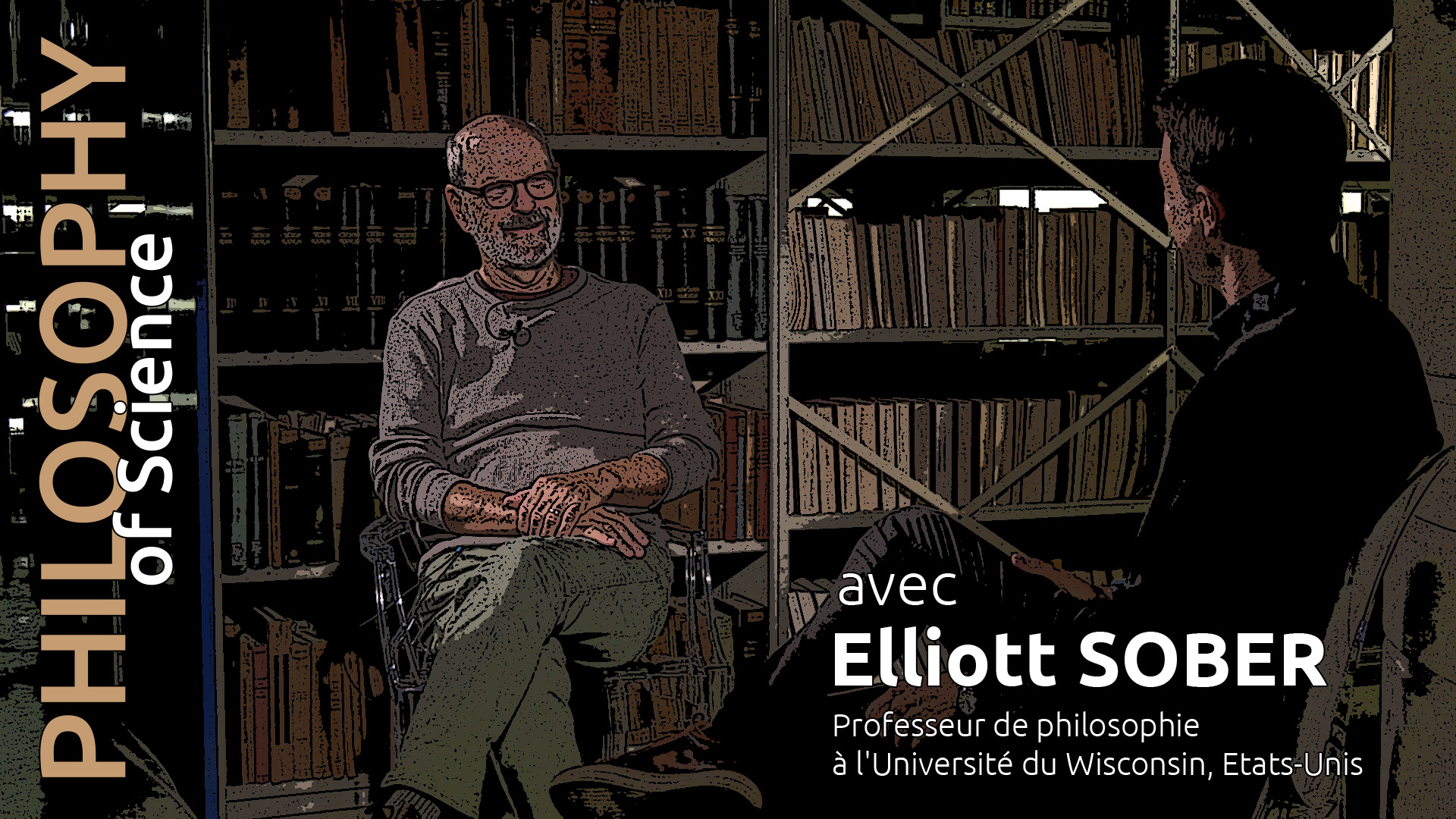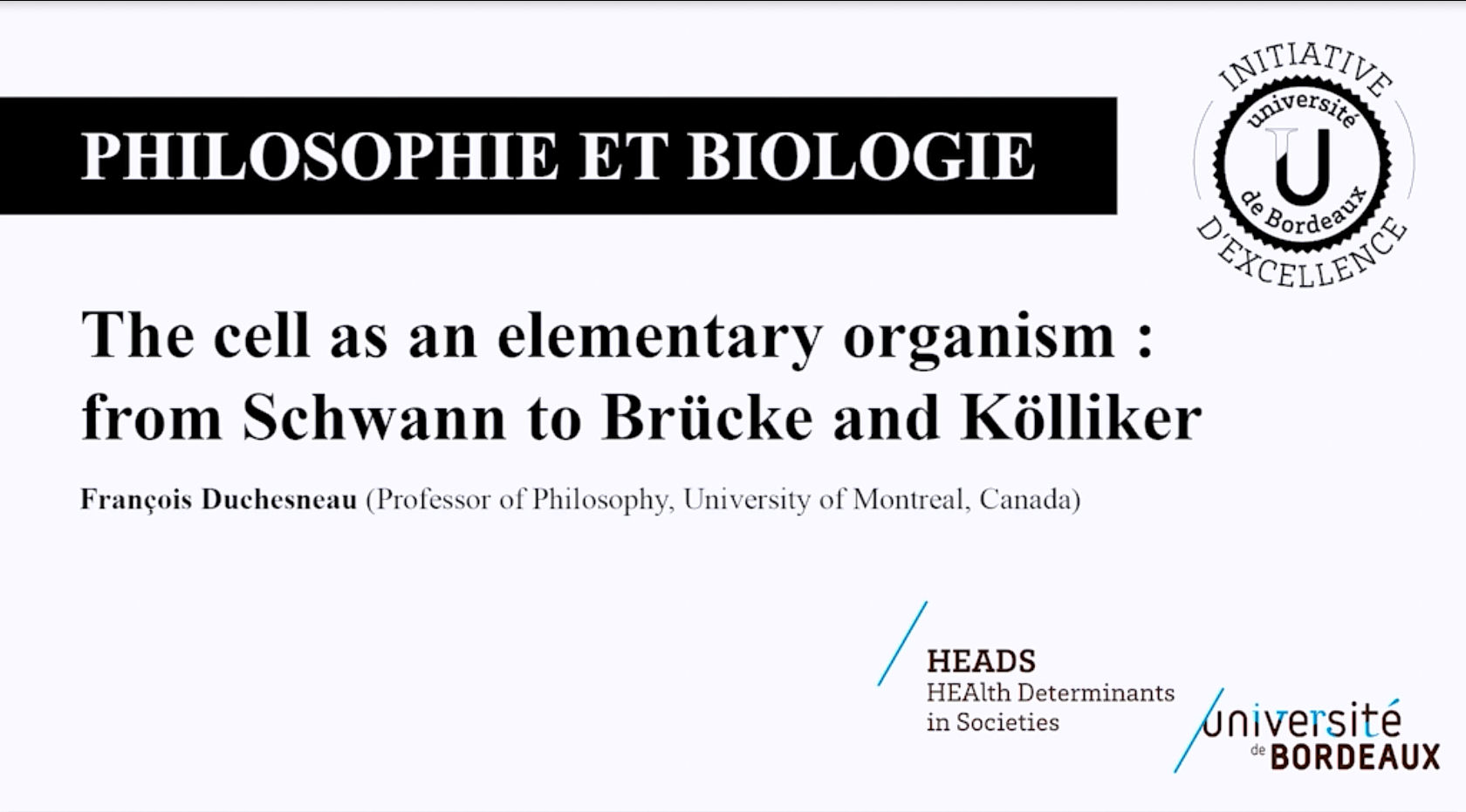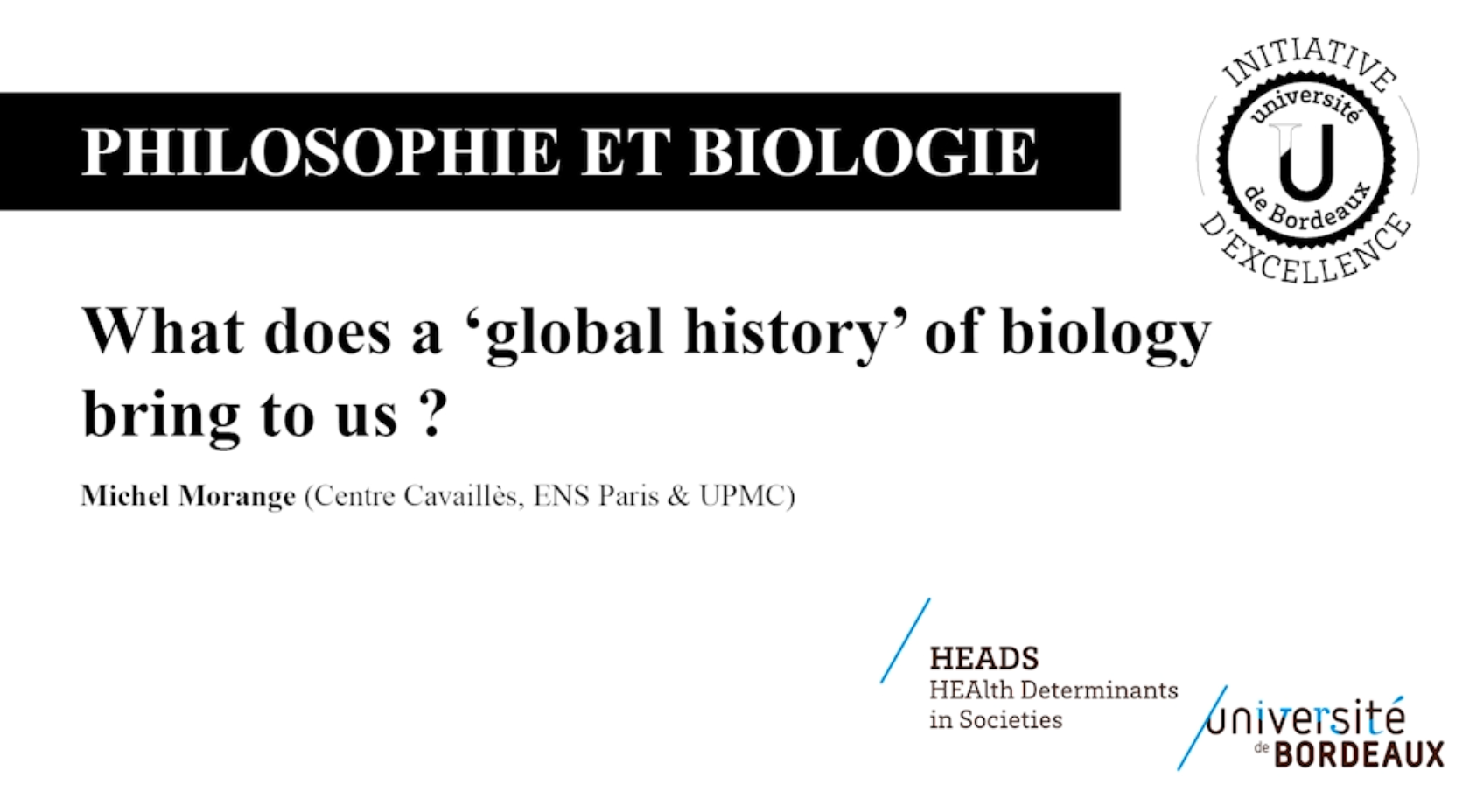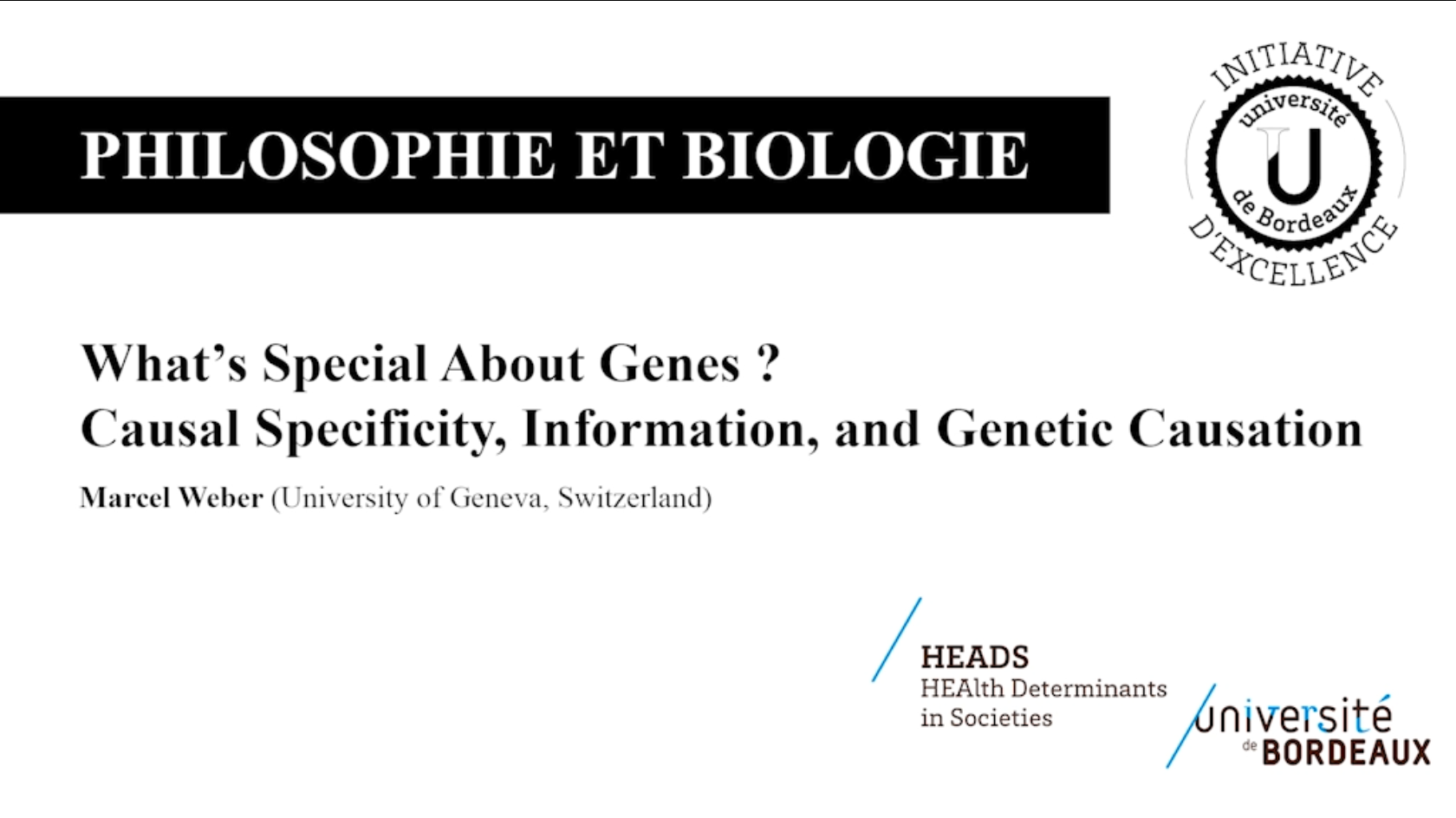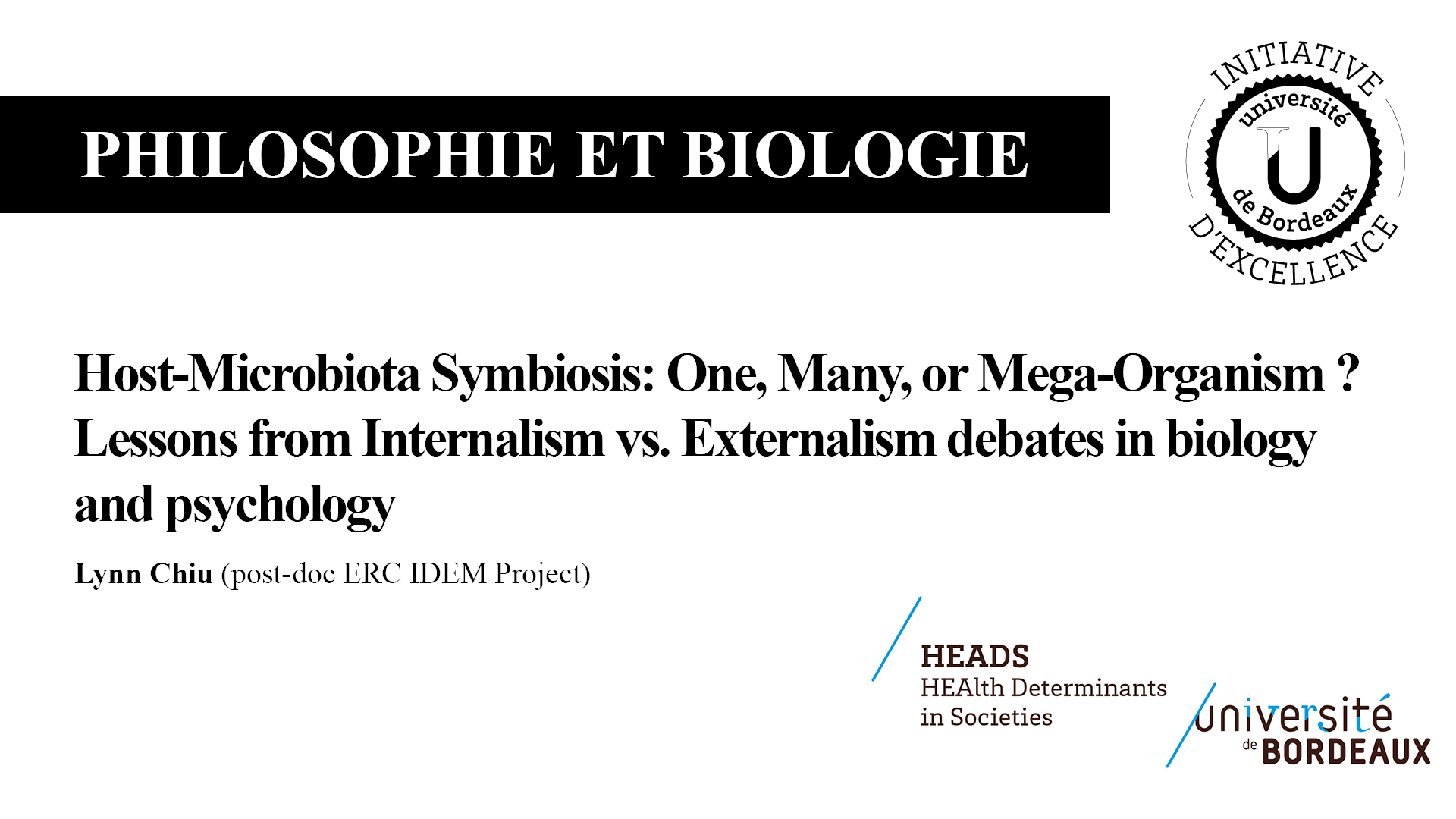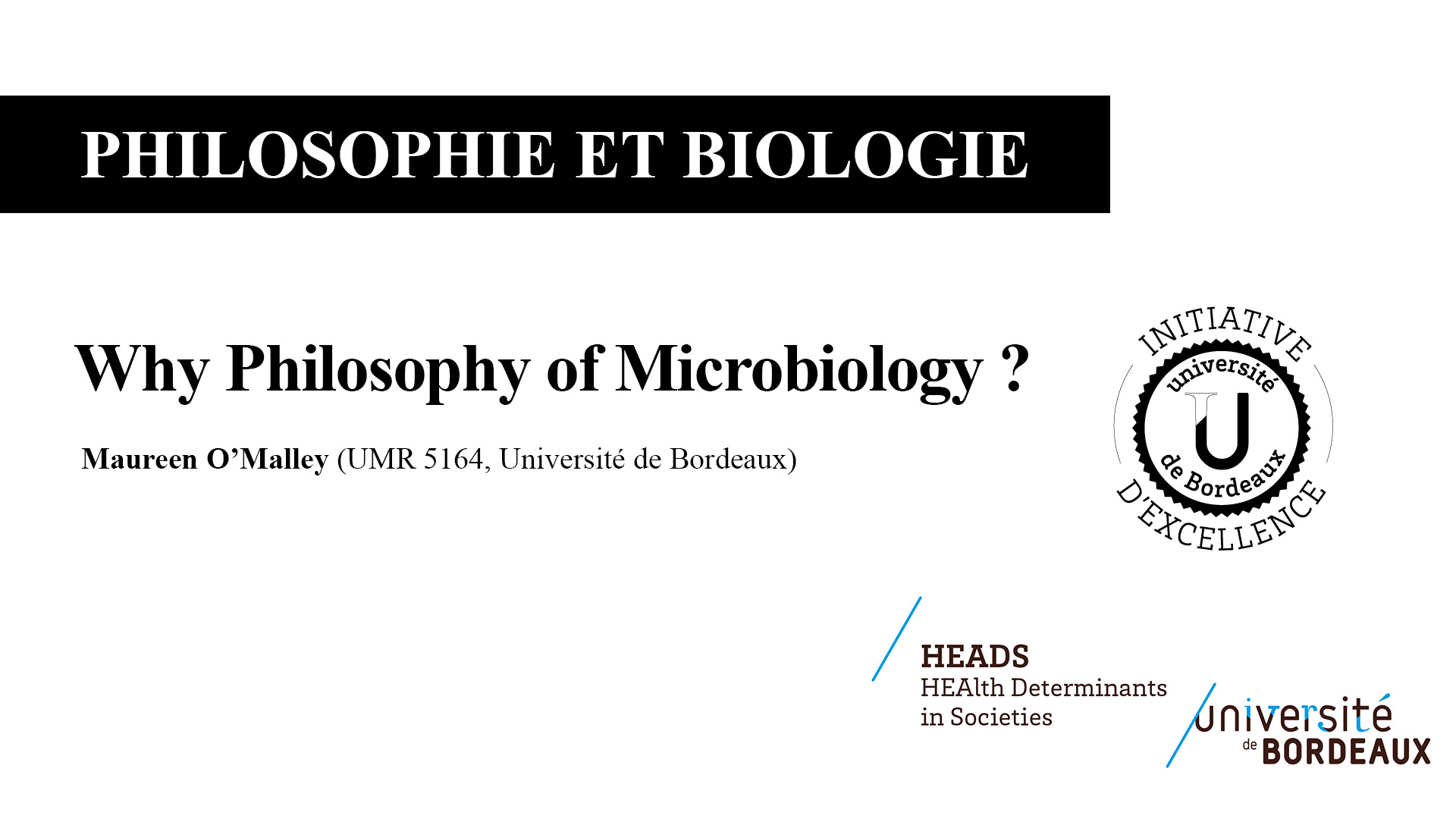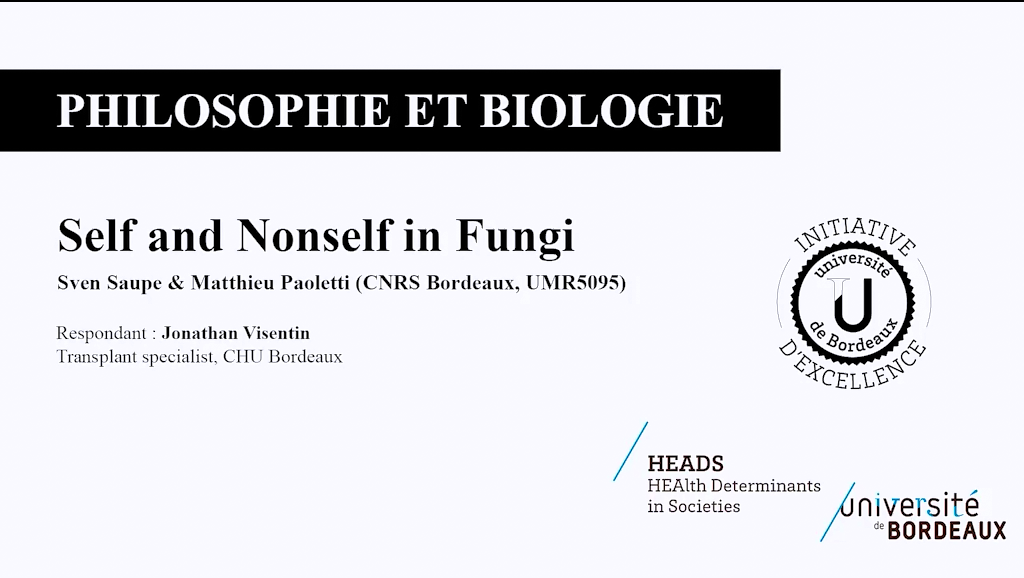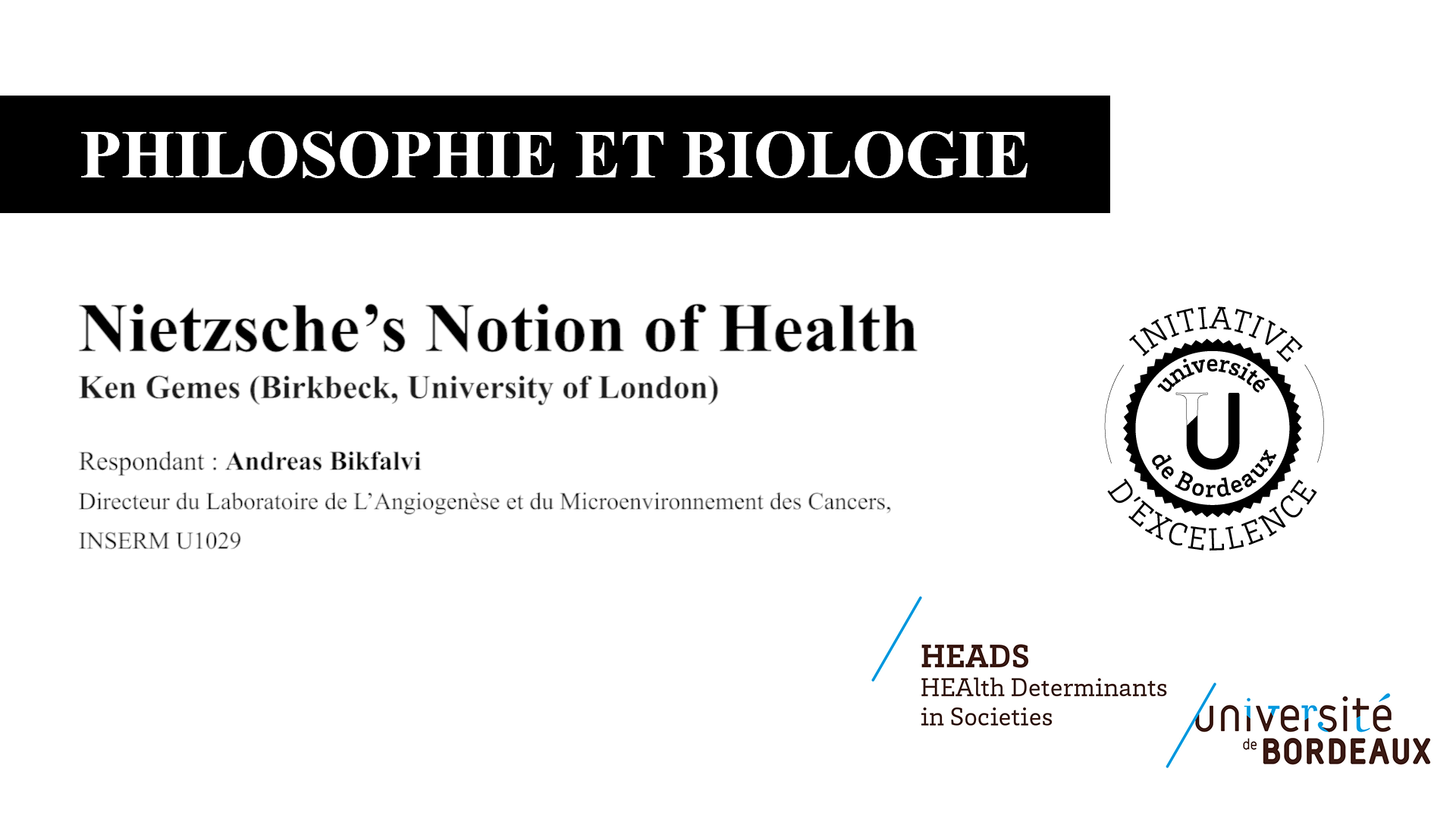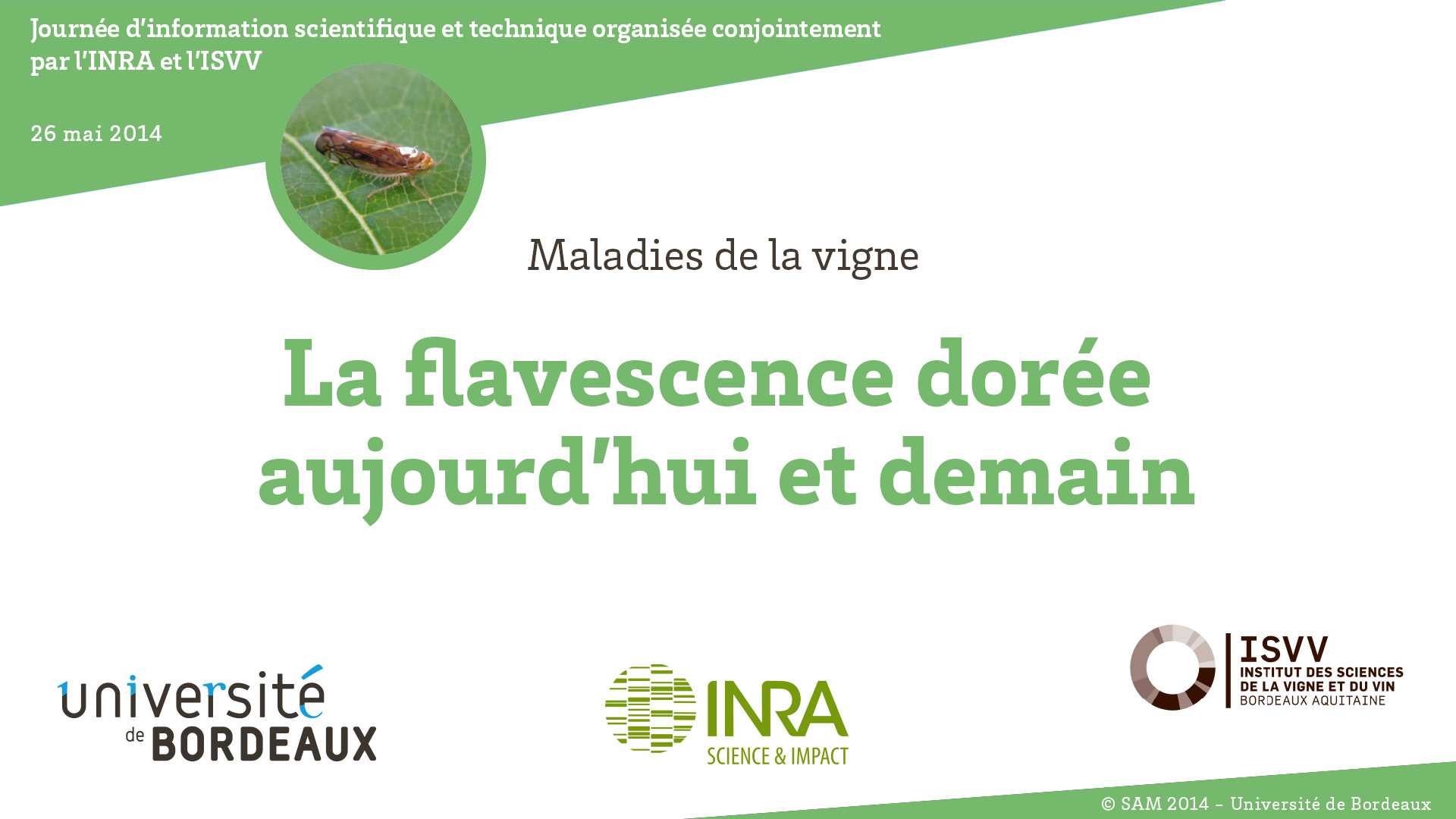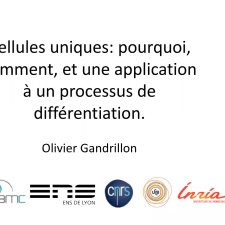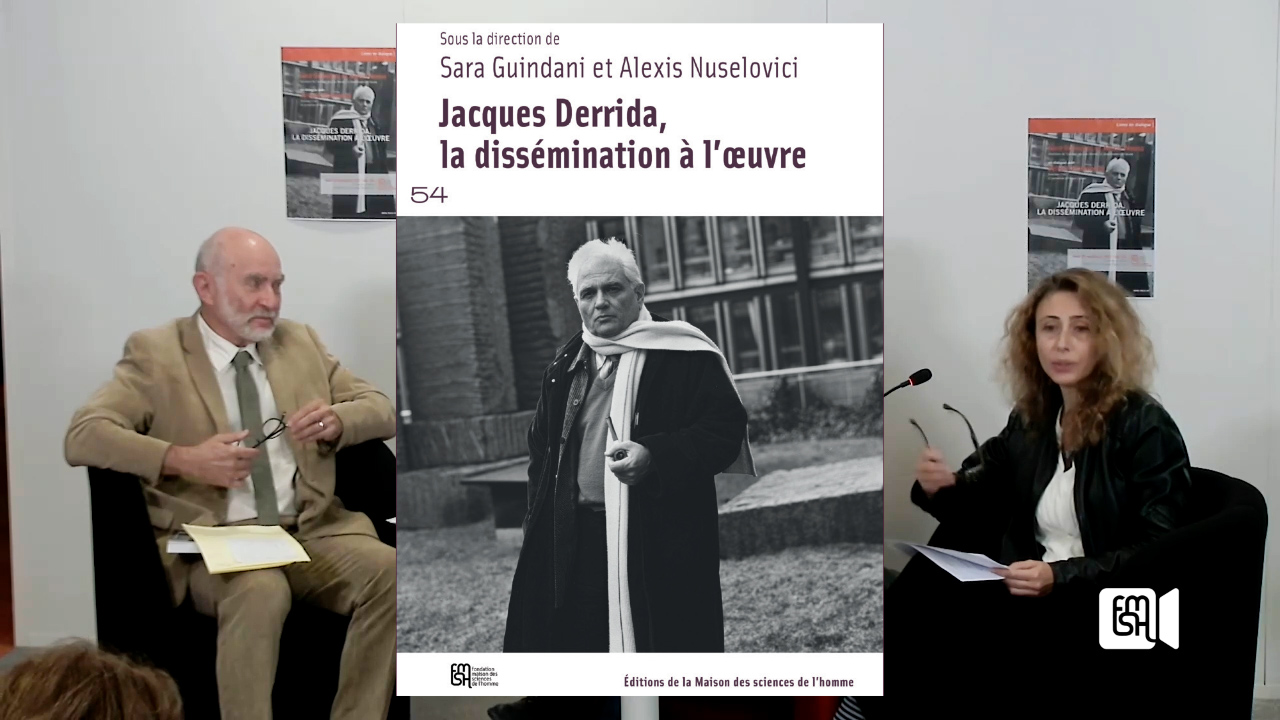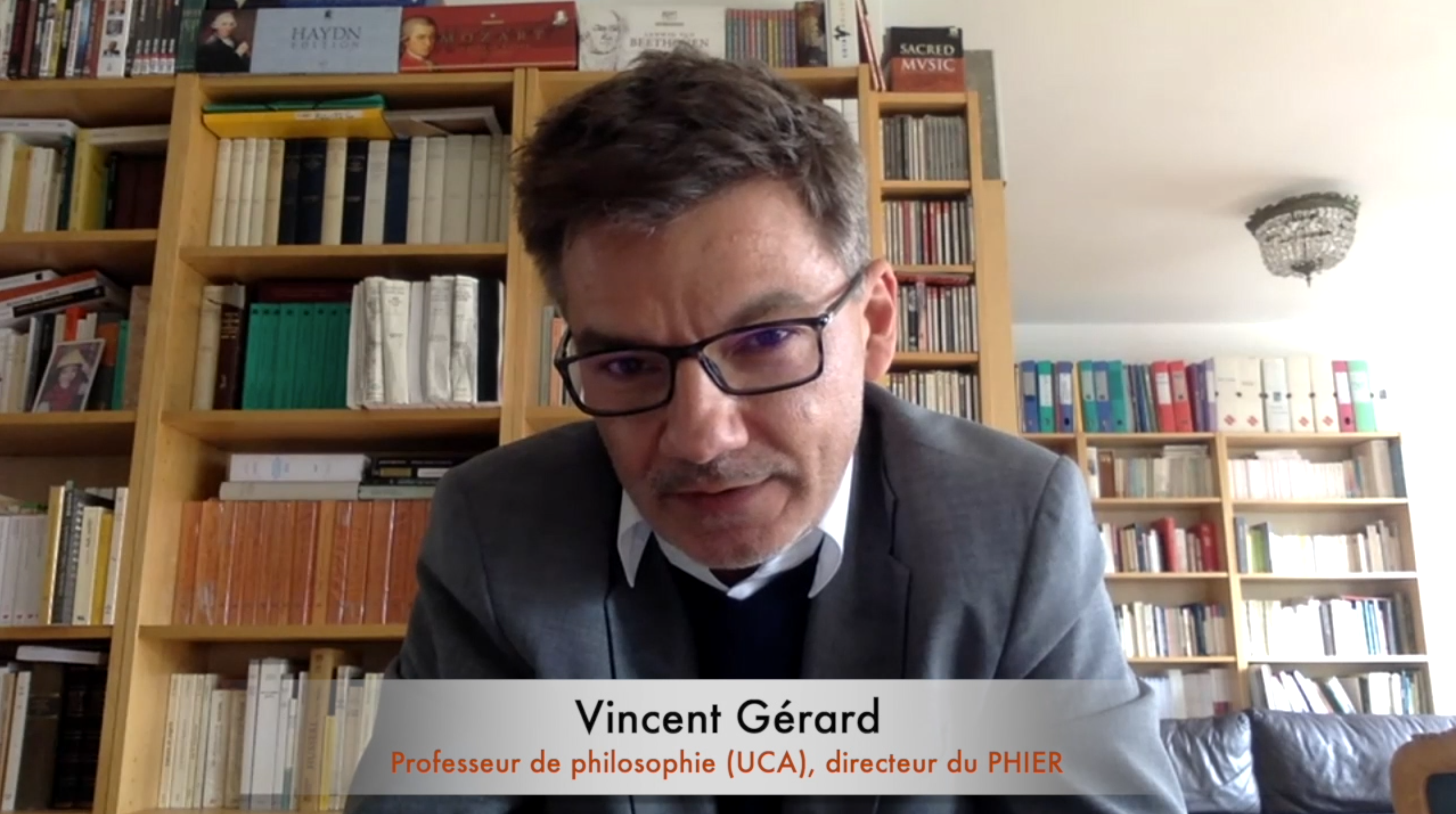Notice
From the question “what is life?” to the building of minimal cells
- document 1 document 2 document 3
- niveau 1 niveau 2 niveau 3
Descriptif
For many centuries, the questionabout the meaning and nature of life has been central in philosophy andscience. We have now gathered, through experimental approaches, a large body ofknowledge about the organization of living organisms at different levels, butthe question “what is life?” remains the object of debates. In fact, this question is in the spotlight for at least three reasons. The first one comes from the need to recognize life in extra-terrestrial systems, the second one is related to the understanding of the origin of life itself and the third one is linked to the development of cellular chassis using synthetic biology. Indeed, one of the goals of synthetic biology is to build novel living entities that would fulfill some of our needs. One of the pursued approaches aims at creating cellular chassis that would be close to the concept of a minimal cell. To reach that goal, one first needs to define the minimal information (i.e. essential genes) that is necessary and sufficient to support life, at least in the laboratory. The next step is to find a method to produce a cellular system that would use this set of essential genes as its genome. The type of resulting organism does not exist in Nature and is not the product of Evolution. This brings us back to the definition of a living organism because these entities are obviously not autonomous.
In a first part the work done with mycoplasmas that are considered as models of natural and minimal cells is presented and in a second part, the implications of this work in the context of the development of synthetic biology are discussed.
Thème
Documentation
Ressources
Réferences Grand public
– Une vidéo de François Jacob en 2000 :
http://www.canal-u.tv/video/universite_de_tous_les_savoirs/qu_est_ce_que_la_vie.880
– Une vidéo de Craig Venter sur « What is life ? » en 2012 enregistrée au Trinity College of Dublin :
https://www.youtube.com/watch?v=qi2MhsUSu0U
Une vidéo TED : Martin Hanczyc: The line between life and not-life :
https://www.ted.com/talks/martin_hanczyc_the_line_between_life_and_not_life
– What Is Life?. (2015, December 24). In Wikipedia, The Free Encyclopedia. Retrieved 16:02, January 14, 2016, from
https://en.wikipedia.org/w/index.php?title=What_Is_Life%3F&oldid=696596560
– Dossier spécial La Recherche :
http://www.larecherche.fr/savoirs/dossier-special/2-est-ce-vie-01-10-2005-70772
Références spécialisées
– Szostak JW, Bartel DP, Luisi PL. Synthesizing life. Nature. 2001 Jan 18;409(6818):387-90.
– Danchin A. Scaling up synthetic biology: Do not forget the chassis. FEBS Lett. 2012 Jul 16;586(15):2129-37.
– Grosjean H, Breton M, Sirand-Pugnet P, Tardy F, Thiaucourt F, Citti C, Barré A, Yoshizawa S, Fourmy D, de Crécy-Lagard V, Blanchard A. Predicting the minimal translation apparatus: lessons from the reductive evolution of mollicutes. PLoS Genet. 2014 May 8;10(5):e1004363.
– Gibson DG, Glass JI, Lartigue C, Noskov VN, Chuang RY, Algire MA, Benders GA, Montague MG, Ma L, Moodie MM, Merryman C, Vashee S, Krishnakumar R, Assad-Garcia N, Andrews-Pfannkoch C, Denisova EA, Young L, Qi ZQ, Segall-Shapiro TH, Calvey CH, Parmar PP, Hutchison CA 3rd, Smith HO, Venter JC. Creation of a bacterial cell controlled by a chemically synthesized genome. Science. 2010 Jul 2;329(5987):52-6.
Dans la même collection
-
Philosophy of Science / Elliott Sober
SoberElliottElliott Sober est philosophe de la biologie à l’Université du Wisconsin. Dans cette interview avec Thomas Pradeu, il récapitule son parcours et présente sa vision de la contribution de la
-
The cell as an elementary organism: from Schwann to Brücke and Kölliker
DuchesneauFrançoisThis presentation is about the way cell physiology (Cellular physiologie) was born. Indeed, Schwann invented the cell theory in 1839, but his views on the cell were rapidly challenged and transformed
-
What does a ‘global history’ of biology bring to us ?
MorangeMichelTo write a global history of life sciences from Antiquity to extant research, from molecular biology to ecology and ethology is an impossible task, the promise to be inaccurate and wrong in many
-
What’s Special About Genes? Causal Specificity, Information, and Genetic
WeberMarcelPhilosophers of biology have recently been debating to what extent such nucleic acids that are said to carry genetic information (i.e., DNA or mRNA) really play a special role in development. A
-
Host-Microbiota Symbiosis: One, Many, or Mega-Organism? Lessons from Internalism vs. Externalism de…
ChiuLynnI will distinguish between three types of interactionist reactions to internalist or externalist theories. These theories assign specific theoretical roles to internal and external factors,
-
Why Philosophy of Microbiology ?
O'MalleyMaureen A.Microbes have only recently become the objects of sustained philosophical attention. Some of the reasons why philosophers now find microbes and microbiology interesting, and why philosophy of
-
Self and non-self in fungi
SaupeSvenPaolettiMathieuVisentinJonathanThe notion of self is a rich but ambiguous concept that is used in a wide array of academic disciplines including immunology, psychology and philosophy (in particular in different branches of
-
Nietzsche's notion of Health
GemesKenBikfalviAndreasIt is widely known that Nietzsche take himself to present a tremendous challenge to conventional morality. Many of his interpreters have been exorcised in trying to make precise the nature of that
Avec les mêmes intervenants et intervenantes
-
La flavescence dorée aujourd’hui et demain / Ouverture de la journée
DubourdieuDenisBlanchardAlainThiéryDenisMaladies de la vigne : la flavescence dorée aujourd’hui et demain Journée d’information scientifique et technique La flavescence dorée est une maladie de quarantaine particulièrement contagieuse
Sur le même thème
-
Cellule unique : description, application à la différentiation cellulaire
GandrillonOlivierPourquoi et comment faire de la cellule unique
-
SOIRÉE DE PRÉSENTATION DE L'OUVRAGE "JACQUES DERRIDA, LA DISSÉMINATION A L’ŒUVRE"
BourmeauSylvainGuindaniSaraNoussAlexisÀ l'occasion de la parution de l'ouvrage Jacques Derrida, la dissémination à l'œuvre dans la collection "54", les Éditions de la Maison des sciences de l'homme organisent une soirée de
-
Comment s’orienter dans la crise ?
Proposée et organisée par la Maison des Sciences de l'Homme de Clermont-Ferrand et le PHIER, laboratoire Philosophies et Rationalités, cette web conférence, ouverte à toutes et à tous, s’est tenue le
-
Le Libéralisme dans tous ses États : Histoire de la pensée
le Libéralisme dans tous ses Etats- Histoire de la pensée
-
L'attention aux plantes ordinaires
De la forêt à la végétation urbaine, nous vivons entourés de plantes qui participent à la composition de nos mondes. Mais bien souvent, celles qui peuplent les espaces de notre vie quotidienne
-
Penser et agir avec la nature
Les études s'intéressant à l'impact de l'activité humaine sur la nature se multiplient depuis les années 60. Aujourd'hui, l'intérêt du public pour la question écologique est massif et les
-
Pourquoi philosopher sur le végétal ?
La place occupée par le végétal dans la pensée contemporaine n'a cessé de progresser ces dernières années. Les enseignements qui en découlent nous inviteraient à reconsidérer des notions telles
-
Ricoeur et le sens de l'altérité, par Olivier Abel
Parlant de la rencontre des cultures, Ricœur écrivait en 1960 : « Pour avoir en face de soi un autre que soi, il faut avoir un soi ». Entre un relativisme où il n’y a plus que des autres, et la
-
Michaël Crevoisier
Michaël Crevoisier, EA 2274 Logiques de l’Agir, Université de Franche-Comté. Penser l’individuation du sujet transcendantal grâce à la méthode analogique. Simondon critique de la critique kantienne
-
Anne Lefebvre
Anne Lefebvre, CRD, ENS Paris-Saclay Après Bergson. Le devenir analogique de l’intuition ou la critique de la hiérarchisation de l’action
-
Jean-Hugues Barthélémy
Jean-Hugues Barthélémy, EA 4414 HAR, Université Paris-Nanterre La réhabilitation philosophique de l’analogie chez Simondon et le problème de la nature analogique de la philosophie
-
Carole Widmaier
Carole Widmaier, EA 2274 Logiques de l’Agir, Université de Franche-Comté Conférence introductive. Les enjeux philosophiques et politiques de la théorie simondonienne de l’analogie


